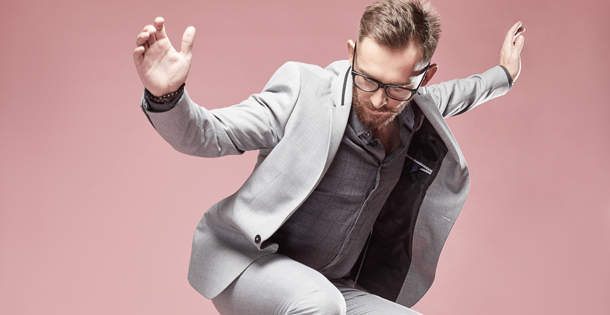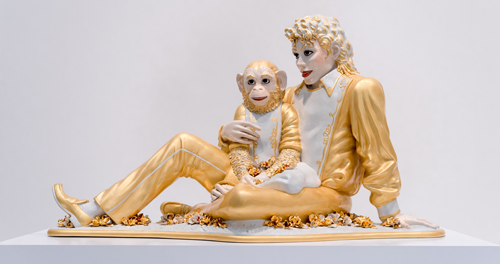
At some point, baby boomers decided not to behave like grown-ups, with repercussions from benign to unfortunate.

The best of The Saturday Evening Post in your inbox!
 casual attire performs a trick on a skateboard." width="500" height="583" />
casual attire performs a trick on a skateboard." width="500" height="583" />
M iddle-aged people wearing Halloween costumes or attending Burning Man are expressions of a phenomenon — the commitment of Americans, beginning with the baby boom generation, to a fantasy of remaining forever young. The treacly term kids of all ages had popped up when baby boomers were kids. But its currency skyrocketed during the 1980s and ’90s, when American adults, like no adults before them — but like all who followed — began playing video games and fantasy sports, dressing like kids, and grooming themselves and even getting surgery to look more like kids. It’s what I call the Kids ’R’ Us Syndrome. It became pandemic and permanent. It ranges from the benign to the unfortunate.
As soon as all boomers were adults, half the buyers of comic books and tickets to superhero movies — the three Supermans and four Batmans just the beginning — were adults. As a result, both genres boomed. Video and computer games grew from nothing to a multibillion-dollar industry, not just because the technology got more powerful and the imaginary worlds more irresistibly realistic and immersive, but also because, by the end of the century, the great majority of consoles and cartridges and discs were bought by people who didn’t have to ask their parents for money — the average player was in his 30s. Video games, originally sold to boys to pretend they were grown-up action heroes, were soon bought mainly by grown men who wanted to play like boys.
I’ve played only one game at home for the many, many hours over many weeks and months required to become adept. It was the first GoldenEye 007, right after it came out in the 1990s. GoldenEye is what they call a free-roaming first-person shooter — that is, I was James Bond, looking for people to kill. I loved it. I loved the complex, 3D pictorial realism, and the music. And I loved that the game transformed me when I was in its world, made me feel actually scared (the adrenaline) and actually as sharp as Bond (the dopamine), in ways that reading a novel or watching a movie generally don’t. I played with my daughters, who were 7 and 9 at the time, each of us taking turns playing different characters. I called it quits after two years, however, because the Columbine massacre made our father-daughter pleasure in shooting and killing each other feel less fun.
The strictly children’s hobby of collecting and trading baseball cards became a primarily adult thing in the 1980s, the same time that Rotisserie League Baseball was invented and became the prototype for fantasy sports. By 1988, there were half a million U.S. fantasy sports players. In any earlier era, spending hundreds of hours a year on an elaborate game of make-believe — I’m a team owner, buying and selling players — would’ve been unthinkable for anyone but children.
Among women, a “sexy schoolgirl” mode became fashionable: knee socks, short kilts, too-small sweaters, backpacks.
With the web, fantasy sports became fully industrialized, a new imaginary national pastime in which a third or more of American males would eventually participate. Fantasy sports are an expression of two underlying fantasyland features that appear again and again. It’s a superrealistic fiction, based on athletes’ actual week-to-week performances and years of stats and a free market in make-believe assets. And it has hyperindividualism: each individual fantasy “owner” has a team composed of athletes whose individual performances are all that matter, rendering real teams’ real wins and losses irrelevant.
Enthusiastic players can slide into outright delusion. In a documentary (called Fantasyland) about a fantasy baseball league, the main subject was a financial analyst who schemed to hang out in real life with “his” MLB players. “I think that the players really do play harder for you when they can see the face of their owner,” he said, in the film’s saddest moment, “when they know who’s out there, who’s the guy who’s calling the shots.” The real team owners naturally encourage the make-believe owners in their childlike obsession.
As a kid, I collected baseball cards and would’ve enjoyed fantasy sports. Also as a kid, I went to summer camp during the late 1960s, a themed one — a “Spanish camp,” where we took Spanish names and spoke the language and ate the foods and learned soccer and played in an Olympics against kids from the nearby Russian and German and French camps. Themed fantasy camps for adults got going in the 1980s, and by the end of the ’90s, almost every team in every professional sport was inviting grown-ups to spend thousands of dollars a day to pretend they were pro athletes. The more imaginary celebrity proximity the better, so individual stars launched their own, from the Michael Jordan Fantasy Camp to the Dorothy Hamill Figure Skating Fantasy Camp. The San Francisco Giants Fantasy Camp sprouted a Sports Media Fantasy Camp so sports-loving weenies could pay to pretend to be broadcasters and photographers. Inevitably it spread to other glamorous fields, becoming its own little piece of the fantasy-industrial complex, more than a thousand camps in all. One such is the five-day Hollywood TV Star Fantasy Camp, where “you’ll stay in the heart of Tinseltown” with “your very own dressing room, cast chair, make-up artist, … call sheets with your name and character name, … a press interview like the ones you see your favorite stars doing, … [a] professional photo shoot to be put on your own personal industry magazine cover,” and an “awards ceremony.” By paying $10,000, “you’ll not only rub elbows with working television actors, you’ll be one!”
All at once in the 1980s, serious artists also embraced and embodied a new faux-childhood mode — Keith Haring’s notebook doodles, Cindy Sherman’s spook-house dress-up photos, and more. Jeff Koons would become the most famous and successful fine artist alive. Among his best-known works are a set of life-size statues from 1988 of forever-young Michael Jackson and his chimp Bubbles; Puppy, a 43-foot-tall terrier made out of flowers, the biggest, prettiest, cutest stuffed animal ever; and Balloon Dog, a perfect mirror-polished stainless steel replica, 12 feet high, of the kid’s party toy, one of which sold for $59 million. “The idea of boyhood is everything to Koons,” a New York profile said of him, explaining that he gives a nonstop “method performance of childlike mystic wonderment,” never stepping out of character.

Going to Star Wars movies, playing GoldenEye, managing an imaginary NFL team, attending a counterterrorism fantasy camp, enjoying kiddie art: even if we’ve banished the thought that we’re acting like kids and pretending to be young, we definitely know we’re consuming fantasies and fictions. But without knowing it, we also started showing signs of Kids ’R’ Us Syndrome in our mundane, everyday lives: the ways we ate and dressed and worked and talked.
When Ben & Jerry’s introduced chocolate-chip-cookie-dough ice cream in 1991, only the first couple of times did eating it feel like a specifically childish indulgence. Adults who wore Starter-brand jerseys and jackets bearing the names and numbers of sports stars did not think of themselves as youth impersonators. Among women, a “sexy schoolgirl” mode became fashionable: knee socks, short kilts, too-small sweaters, backpacks. One professional I knew started wearing a Curious George backpack, and another bought clothes for herself out of her daughters’ Hanna Andersson catalogue. Why did grown-ups start wearing sweatsuits in public? Why did chinos and jeans and polo shirts replace suits and ties in the office? Because our mothers no longer dressed us. Who wouldn’t rather stay in play clothes all day long? In the coolest new offices, especially in California, bosses and employees weren’t just dressing like kids, they actually stocked the places with toys and games, Slinkys and Mr. Potato Heads, Foosball and Halo. It was in the 1990s that I was asked for the first time about a new job, “Are you having fun?” Which became a standard form of the American work-satisfaction question.
Fine, you say, but what real harm did any of that do? Apart from generally making it seem more and more okay for make-believe to leach into real life.
Well, Kids ’R’ Us Syndrome did have one extreme and hideous and tragic victim in Michael Jackson. Just before he entered middle age, he built Neverland Ranch, his own private fantasy camp. He had a steam locomotive pulling fake-old cars on the same narrow-gauge track as Disneyland’s (but longer), and the brick pseudo-Victorian train station he built was practically a copy of the one at the foot of Main Street USA. There were a roller coaster and bumper cars, a petting zoo, a treehouse with a ship’s wheel, a rope bridge, and a candy shop where all the candy was free. He filled the place with real children, of course, and when grown-ups told him not to sleep with them, he’d cry. He lived at Neverland with his chimpanzee, who slept next to him in a crib, attended recording sessions with him, traveled with him.
Jackson’s desperation to look younger — to look fantastic — also drove his mania for cosmetic surgery, of course. During one period in the 1990s, he was reportedly having an operation every couple of months — which, no coincidence, was when cosmetic surgery really took off. Cosmetic surgery is mostly meant to make people look younger — and if not younger, more like fantasy figures from movies and TV and magazines. Breast augmentation surgeries for women tripled in five years, and eventually, 1 in 25 American women would have pouches of silicone or saline implanted in her breasts.
At the same time, images of fantastical sexuality were suddenly, shockingly everywhere. Thanks to home video players, then cable TV, and then the internet, pornography became ubiquitous. How did that make adults more childlike? Well, for one thing, in the old days, porn was a hobby pursued most avidly by teenage boys. But the normalization of pornography also affected women’s behavior. I don’t think it’s a coincidence that pubic hair removal in its most extreme forms became fashionable in America during the early years of the porn glut. I think porn effectively encouraged women to groom themselves more like women in the videos — and thereby to look preternaturally younger, even prepubescent.
Americans began saying and wishfully believing about round-numbered ages that X is the new Y — 30 the new 20, 40 the new 30, 50 the new 40, and so on. Yet in so many ways they all became the new 20, the new 15. Age-appropriate used to be a term strictly for judging whether a particular toy or book or movie or activity was suitable for a child. Its application was reversed, but joshingly, and only concerning the age of adults’ sexual partners; otherwise, there’s no such thing as an age-inappropriate cultural or lifestyle taste for grown-ups. Because we really came to believe we were kids of all ages.
From the book Fantasyland by Kurt Andersen. Copyright © 2017 by Kurt Andersen. Published by arrangement with Random House, a division of Penguin Random House LLC.
Kurt Andersen is the author of True Believers, Heyday, and Turn of the Century. A contributor to New York and Vanity Fair magazines, Andersen is the host and co-creator of the public radio program Studio 360.
This article is featured in the May/June 2018 issue of The Saturday Evening Post. Subscribe to the magazine for more art, inspiring stories, fiction, humor, and features from our archives.
Become a Saturday Evening Post member and enjoy unlimited access. Subscribe now